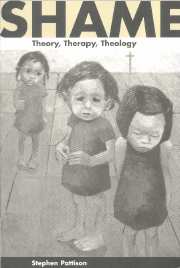1 - Emotional confusion
Published online by Cambridge University Press: 05 June 2012
Summary
Any attempt to review approaches to the emotions is bedevilled by a certain lack of clarity and conceptual confusion in the literature. Similar approaches may be given different names in psychology compared with sociology or anthropology, for example, and even within these disciplines there is a lack of consensus about how to label or categorize the various approaches.
(Lupton 1998: 10)Phenomena such as shame and guilt are widely regarded as emotions (Taylor 1985). I shall, therefore, begin by considering the complexity and contested nature of the study of emotions generally. Unfortunately, the literature that pertains to emotions from different disciplines and approaches is vast, disparate and often incommensurable in terms of both perspectives and findings.
Rehabilitating the emotions
Until recently, emotions were mostly hidden from the purview of serious academic consideration outside the disciplines of biology, psychology and some kinds of philosophy. In the case of the latter, some philosophers such as Spinoza, Hume, Mill and Nietzsche allotted the emotions or passions a significant role in moral life (Calhoun and Solomon 1984). More typically, others, such as Kant, wanted to downplay or eliminate emotions altogether (Lindholm 1990).
A number of factors may have inhibited the widespread academic consideration of emotions historically. Perhaps the main reason that it has been difficult rationally to appraise the emotions is that they have been perceived to be fundamentally anti-rational and antipathetic to the intellect (Averill 1996b). Since the days of the ancient Greek philosophers, what moderns call emotions and what ancients would have called passions, desires and appetites, have represented a disruptive force that appears to threaten rational life for individuals and groups (James 1997; Nussbaum 1994).
- Type
- Chapter
- Information
- ShameTheory, Therapy, Theology, pp. 21 - 38Publisher: Cambridge University PressPrint publication year: 2000



